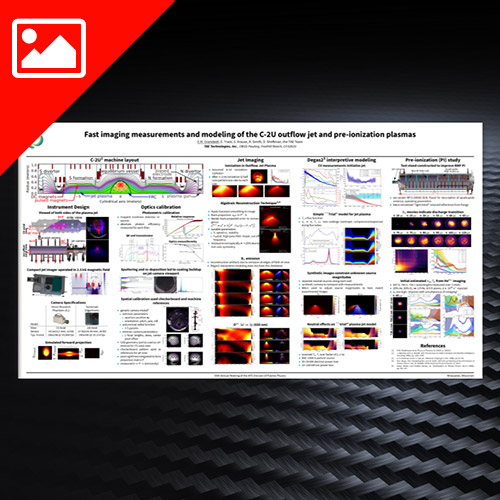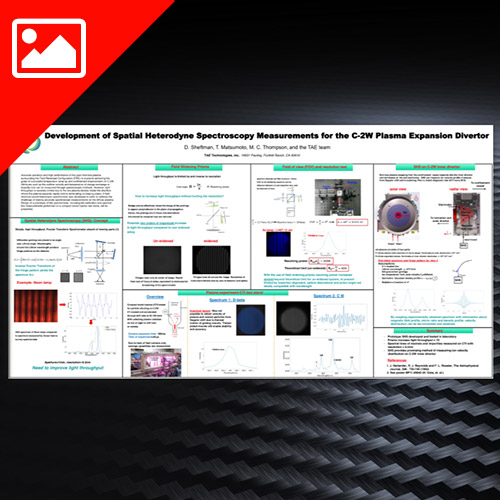
Oct 2017 | Research Library, Posters, Diagnostics, Experiment, Fusion Energy, Fusion Research, Fusion Science, Fusion Technology, Plasma Profiles, Plasma Research
October 2017 | Gabriel Player | APS-DPP | Poster
An attempt to experimentally determine electron heating due to neutral beam injection highlighted a diagnostic gap – lack of time resolution on single-shot Thomson measurements.

Oct 2017 | Research Library, Posters, Fusion Energy, Fusion Research, Fusion Science, Fusion Technology, Heating, Plasma Research, Theory, Waves
October 2017 | Francesco Ceccherini | APS-DPP | Poster
The Tri Alpha Energy (TAE) code RF-Pisa is a Finite Larmor Radius (FLR) full wave code developed through the years to study RF heating in the Field Reversed Configuration (FRC) in both the ion and electron cyclotron regimes.

Oct 2017 | Research Library, Posters, Experiment, Formation, Fusion Energy, Fusion Research, Fusion Science, Fusion Technology, Plasma Research
October 2017 | Erik Trask | APS-DPP | Poster
Circuit is decoupled from reversal, with improved pulsed power reliability
– Ionization percentage is ~100%, with flat radial distribution
– High power circuits are implemented on C-2W (Norman)

Oct 2017 | Research Library, Posters, Diagnostics, Experiment, Fusion Energy, Fusion Research, Fusion Science, Fusion Technology, Plasma Research
October 2017 | E. Granstedt | APS-DPP | Poster
Pre-ionization (PI) study Test stand constructed to improve RMF PI. Black anodized “light-blind” reduced reflections from flange.

Oct 2017 | Research Library, Posters, Diagnostics, Experiment, Fusion Energy, Fusion Research, Fusion Science, Fusion Technology, Plasma Research
October 2017 | D. Sheftman | APS-DPP | Poster
Accurate operation and high performance of the open field line plasma surrounding the Field Reversed Configuration (FRC) is crucial to achieving the goals of successful temperature ramp up and confinement improvement on C-2W.

Oct 2017 | Research Library, Posters, Fusion Energy, Fusion Research, Fusion Science, Fusion Technology, Modeling, Plasma Research, Theory
October 2017 | D.D. Ryutov | APS-DPP | Poster
Main contribution to fusion energy release comes from the suprathermal “tails” of the distribution functions of the fusing ions





